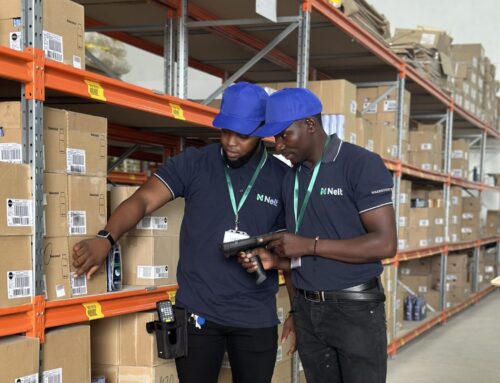WMS and Picking Methods
How to choose the best one for your warehouse?
What is WMS?
A warehouse management system, or WMS, is a software application that helps businesses manage and organize their warehouses. It provides tools for tracking inventory levels, managing stock movements, and optimizing the use of warehouse space and labor.
One key function of a WMS is to facilitate the picking of items for orders. This is the process of selecting the items from the warehouse locations and packing them for shipping. There are several different picking options that a WMS can support, each with its advantages and disadvantages.

Picking methods
One common picking method is single-order picking, where a picker is responsible for selecting all of the items for a single order. This method is straightforward and can be efficient for larger orders with many items.
Another picking option is batch picking, where a picker is responsible for separating items for multiple orders at the same time. This method can be more efficient than single-order picking, as it allows the picker to move through the warehouse more quickly and make fewer trips. However, it requires careful planning and coordination to ensure that the correct items are picked for each order.

Zone picking is another option, where the warehouse is divided into zones, and pickers are assigned to specific zones. This allows for more efficient picking, as pickers can focus on the items in their assigned zone and do not need to travel as far. However, it requires more advanced planning and coordination to ensure that items are distributed evenly among the zones.
Finally, there is wave picking, where orders are grouped into waves and picked according to a predetermined algorithm. This allows for even greater efficiency, as it allows pickers to focus on specific items and eliminates the need for them to constantly be moving around the warehouse. However, it requires careful planning and coordination to ensure that the waves are optimized for the warehouse layout and the items being picked.
How to choose the right picking method
Based on industry and business, different picking methods might be the most suitable, or even a combination of methods. It is the process that generates the highest operating costs in the warehouse. The process needs to be adapted to the type of goods and structure of delivery orders, and this is exactly what efficient WMS solutions can provide.
When picking goods in the warehouse, it is important to create a process that is simple for the picker, and also to optimize the worker’s movement optimally. On the other hand, all the logic around the required information, defining the best route for the picker, and other things should be done by the application itself in the background.
B2B vs B2C
To give an example. B2B is characterized by a smaller number of larger orders, while B2C is characterized by a large number of small orders. In B2B orders, picking usually refers to entire pallets or boxes, while in eCommerce (type of B2C), the largest percentage of orders represents the delivery of one piece of an article: one order = one piece. In these two cases, completely different picking methods are applied.
With B2B delivery orders, the goods are usually directly separated into handling units (most often pallets) in which the goods leave the warehouse, while with e-commerce delivery, picking is usually done in two or more steps, where only in the last step is packing of the goods in the final boxes.
From the production warehouse, goods usually come out on whole pallets, so it is necessary to adapt to such a way of working, where most picking is done with forklifts, which most often pick pallet by pallet.
Available space and the process of separating goods
Depending on the available space in the warehouse and the method of storage, picking processes may differ. In rack warehouses, picking is often done only in the zero level, while the other levels are used for stock storage (reserve). For the picking process to work smoothly, it is necessary to ensure the timely movement of goods from the reserve zone to the pick zone. That process is called replenishment, and WMS, through smart algorithms, defines exactly which goods at that moment are the best to drop from the reserve into the picking zone (taking into account traceability, shelf life, picking zone capacity, etc.)
The process of separating goods is the most expensive in the process of sending goods. In GET WM, there is a part (module) that deals with optimizing the movement of workers through the warehouse, where the application creates a set of positions that are optimal for each worker from the set of orders that need to be separated. The savings generated by using GET WM in certain warehouses were up to 49% of the total distance traveled by workers.
Productivity
In warehouses, the largest number of workers are generally engaged in the picking process. For them to be productive, the work they perform should be as simple as possible, with fewer clear and simple steps in the picking process.
The goal is for the WMS to do as much of the work as possible so that the workers are left with only what the application cannot conclude on its own. Processes should be created in such a way that they can be clearly described on no more than 1-2 pages of A4 format, with print screens from the application explaining all the functionality. The goal is that after 1-2 hours the worker can independently perform each process and that everything is completely clear to him. Also, due to the increasing participation of workers from other countries (who speak other languages) in the work in the warehouse, the application must provide the possibility of working in different languages.
Conclusion
In conclusion, an efficient WMS can provide a range of picking options to help businesses efficiently manage their warehouses. The right picking method will depend on the size and complexity of the warehouse, the types of items being picked, and the volume of orders. It is important to create the right process and to optimize movement in the warehouse in the most efficient way.





